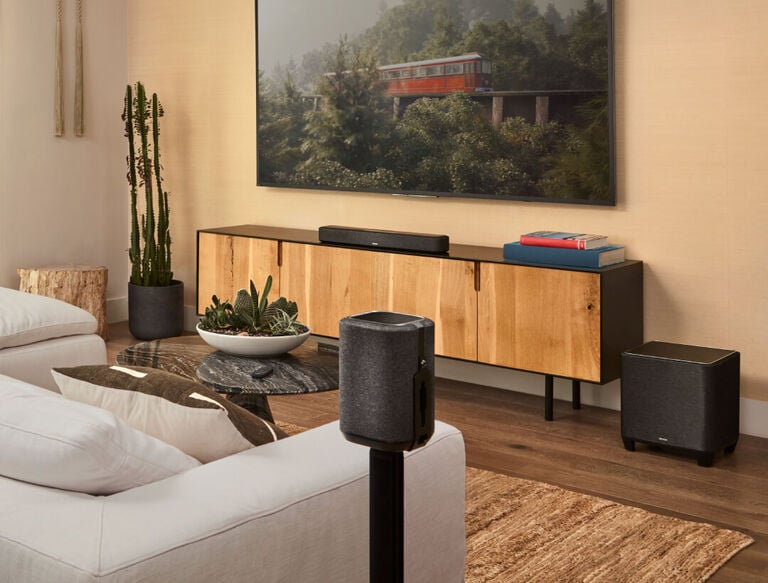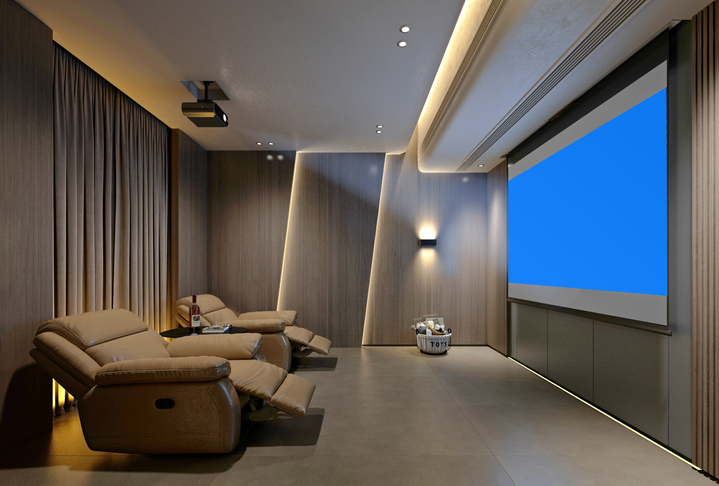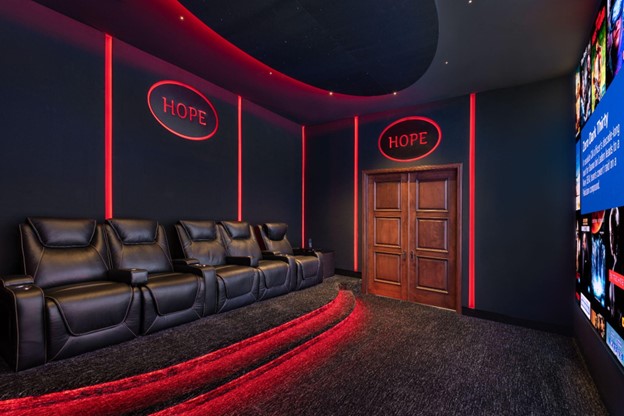Upgrade Your Living Space with Tampa Home Theater Installation
Upgrade Your Living Space with Tampa Home Theater Installation
Blog Article
Home Theater 101: Every Little Thing You Need to Know for a Motion Picture Experience in your home
Producing a home cinema that equals the motion picture experience of a business theatre involves cautious factor to consider of numerous components, consisting of display selection, sound systems, and space design. Whether you are pondering the perfect screen size or the intricacies of surround audio, recognizing these principles is vital.
Picking the Right Screen
When establishing a home theater, selecting the appropriate display can make or break the seeing experience - tampa home theater installation. The display functions as the centerpiece of your setup, affecting photo high quality, seeing angles, and overall visual. Secret elements to consider include display kind, size, and resolution
Initially, determine the ideal display size based on your space dimensions and seating distance. Next off, choose between numerous screen kinds, such as fixed-frame, motorized, or retracting displays, each offering distinct benefits.
Resolution is an additional vital factor. For a genuinely immersive experience, consider a screen created for 4K and even 8K content, ensuring sharpness and clearness. Furthermore, think about the display's gain, which impacts illumination and comparison; a greater gain can enhance brightness in well-lit spaces, while a reduced gain might be better for darker settings.
Picking Audio Equipment
Audio equipment is a critical component of any type of home movie theater system, dramatically enhancing the overall viewing experience. The choice of audio equipment can identify the depth, clearness, and immersion of noise, vital for developing a cinematic ambience.
When picking audio equipment, consider a surround stereo, which generally includes a receiver, multiple speakers, and a subwoofer. A 5.1 or 7.1 network system is recommended, where the first number represents the audio speakers and the 2nd the subwoofer, offering an immersive soundscape. The receiver is the heart of the system, managing audio and video signals, and should support contemporary formats like Dolby Atmos for an improved spatial experience.
Quality audio speakers are necessary; search for designs that provide a well balanced noise account with good bass feedback. Floor-standing audio speakers can produce richer audio, while bookshelf alternatives save area. Additionally, take into consideration cordless choices for ease of setup, although wired systems often deliver superior performance.

Ideal Seating Plans
Creating an optimal home movie theater experience hinges considerably on ideal seating arrangements. The plan of seats plays a vital duty in both comfort and checking out top quality, straight impacting the overall cinematic experience.
First, think about the screen size and seeing range. A common guideline is to position seats at a distance about 1.5 to 2.5 times the angled dimension of the display. This ensures an immersive experience without straining the eyes.
Next, altitude is crucial. If your seats is in a tiered style, the back rows must be greater than the front to prevent obstructions. For level seating, make certain that the Check Out Your URL front row is not also near the display, and that every person has a clear line of vision.
In addition, take into consideration the setup in terms of social dynamics. Group seats can enhance the communal experience, while specific seats may be chosen for individual watching.

Last but not least, prioritize convenience with ergonomic seating that supports extensive viewing periods. Including recliners or supported seats can dramatically enhance the experience, making the home theater a recommended destination for both entertainment and relaxation.
Lighting and Setting
Effective lighting and setting are necessary parts of a properly designed home theater, as they dramatically influence the viewing experience. The ideal lighting can enhance the cinematic feeling, while bad options can diminish it. For optimum outcomes, think about a layered lighting method that includes ambient, task, and accent illumination.
Ambient illumination supplies general illumination, ensuring that the space is not entirely dark, which can strain the eyes. Dimmer switches are extremely recommended, enabling changes based upon the content being checked out. Job lights, such as wall surface sconces or floor lights, offers functional illumination for tasks like analysis or navigating the area without interrupting the general environment.
Accent lights can be utilized to highlight architectural attributes or create focal points, including depth and rate of interest to the space. LED strip lights behind displays or along racks can provide a more info here subtle glow that enhances the aesthetic experience without overwhelming the customer.

Wiring and Installation Tips
A well-planned wiring configuration is vital for accomplishing optimal performance in your house theater system. Correct electrical wiring not only makes certain premium audio and video clip signals but likewise enhances the total aesthetic of your space. Begin by drawing up your layout, recognizing where each component will be put, including your screen, speakers, and receiver.
When selecting cords, focus on top quality, properly gauged electrical wiring to reduce signal loss. HDMI wires need to be used for video clip connections, while speaker cable must match the specifications of your audio speakers and amplifier. Opt for in-wall ranked cable televisions to follow safety and security standards and maintain a tidy look.

Final Thought
In recap, creating an extraordinary home theater experience needs cautious factor to consider of various elements, consisting of screen selection, audio equipment, seating setups, illumination, and circuitry. Each component plays an essential function in accomplishing ideal performance and atmosphere, inevitably improving the enjoyment of home enjoyment. By prioritizing these factors, a cinematic atmosphere can be effectively duplicated, permitting immersive viewing experiences that match typical cinema setups. Focus to detail in each location is important for general fulfillment.
Developing a home theater that matches the motion picture experience of a commercial theatre involves mindful consideration of numerous parts, consisting of display selection, sound systems, and room design.When establishing up a home cinema, choosing the ideal display can helpful hints make or damage the viewing experience. Next off, pick in between different screen types, such as fixed-frame, mechanized, or retracting displays, each offering unique advantages. For a really immersive experience, consider a display made for 4K or also 8K material, making sure sharpness and clarity.In recap, producing an exceptional home cinema experience needs mindful factor to consider of different elements, including screen selection, audio equipment, seating arrangements, lighting, and electrical wiring.
Report this page